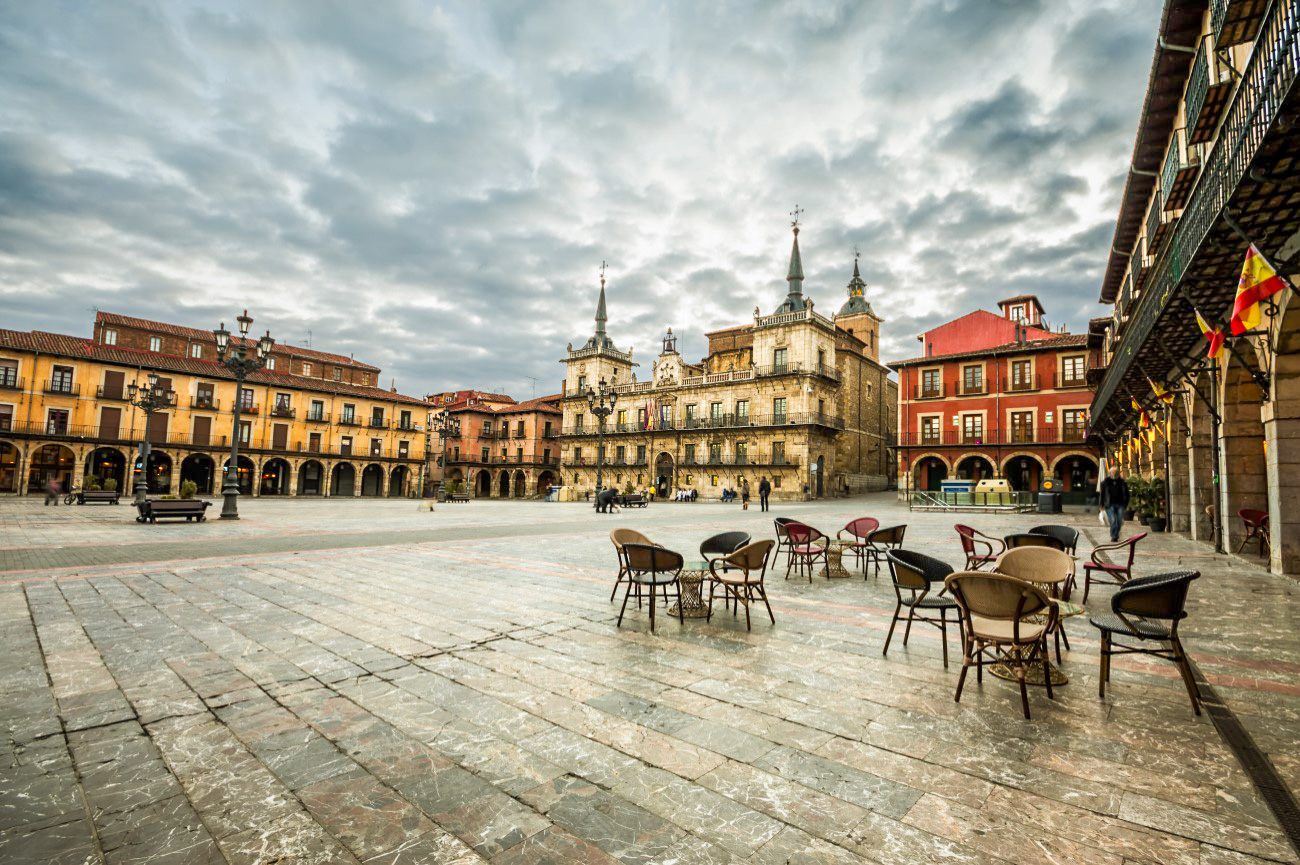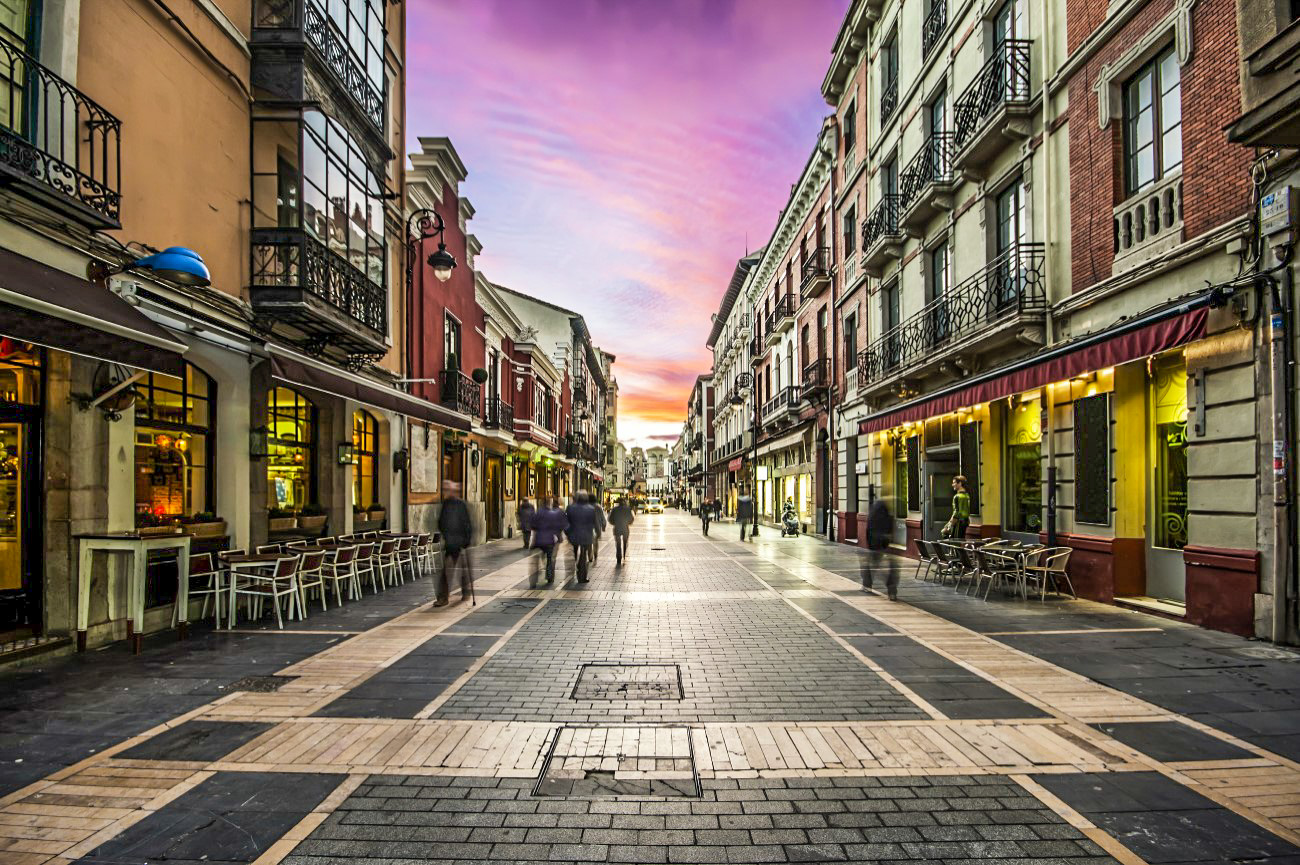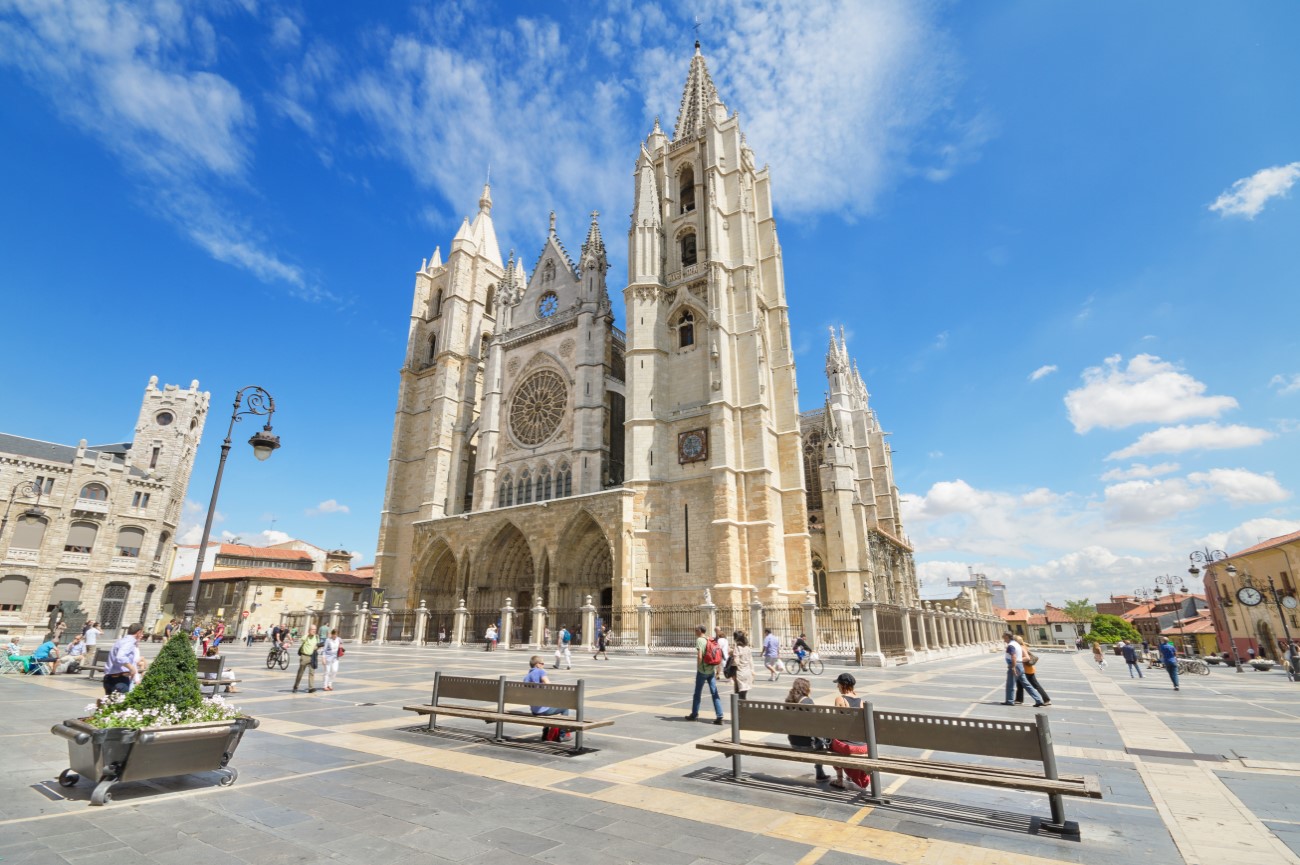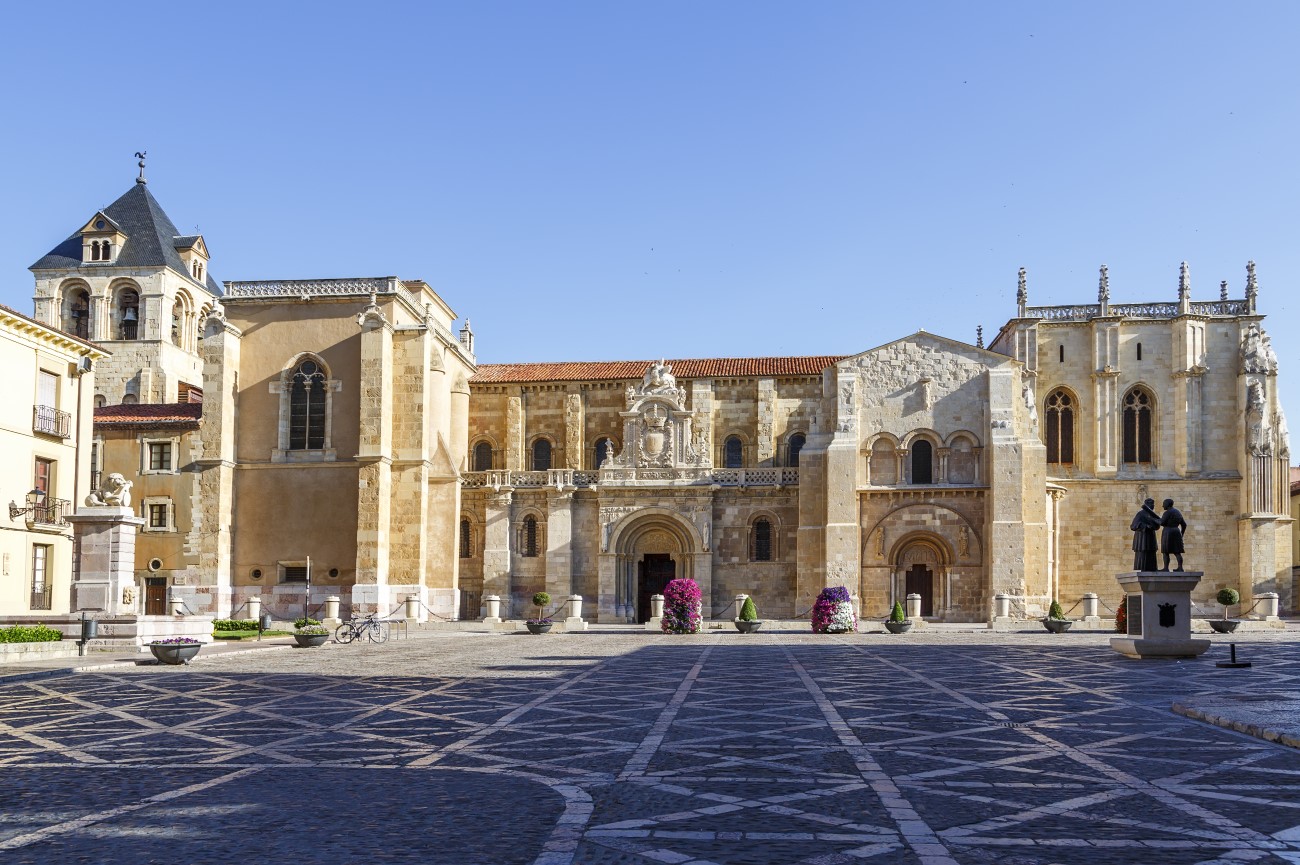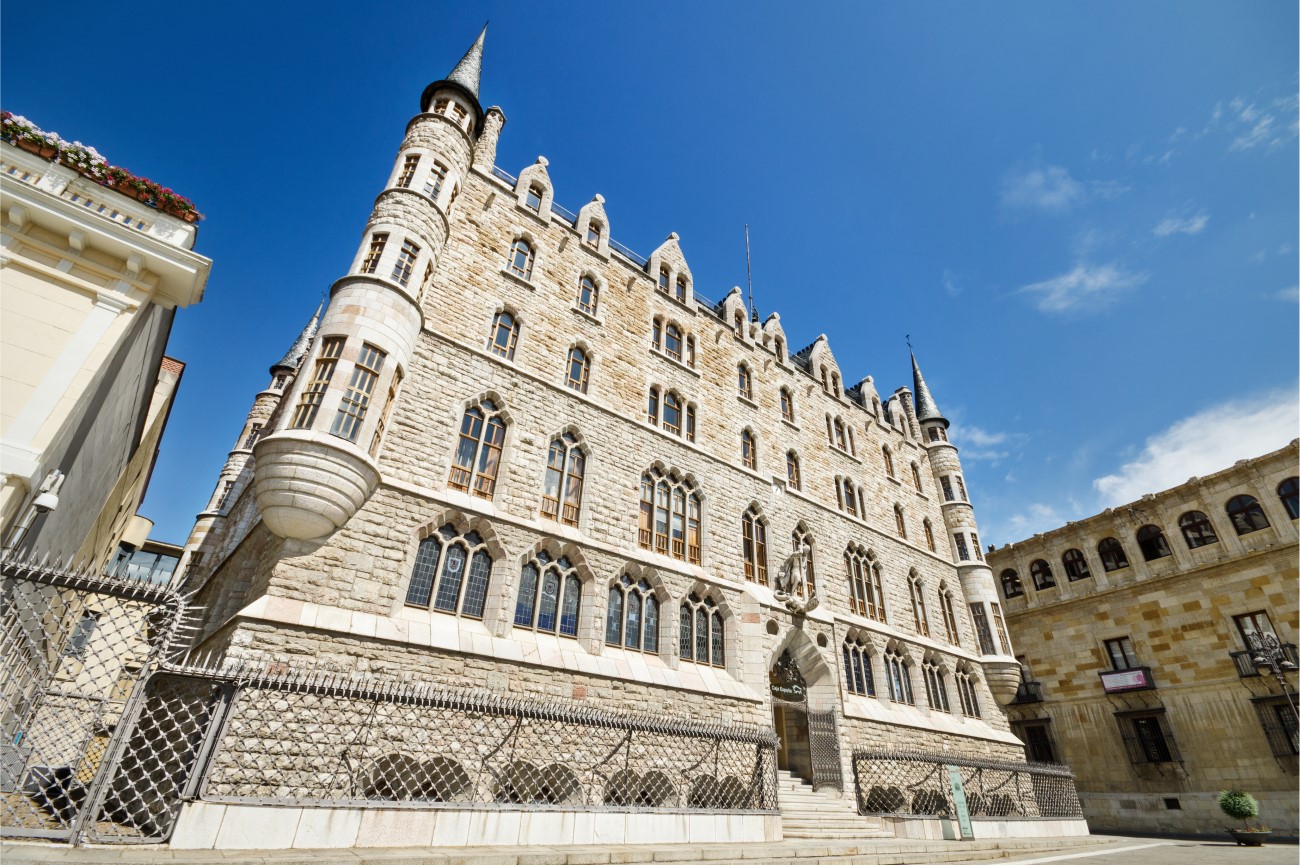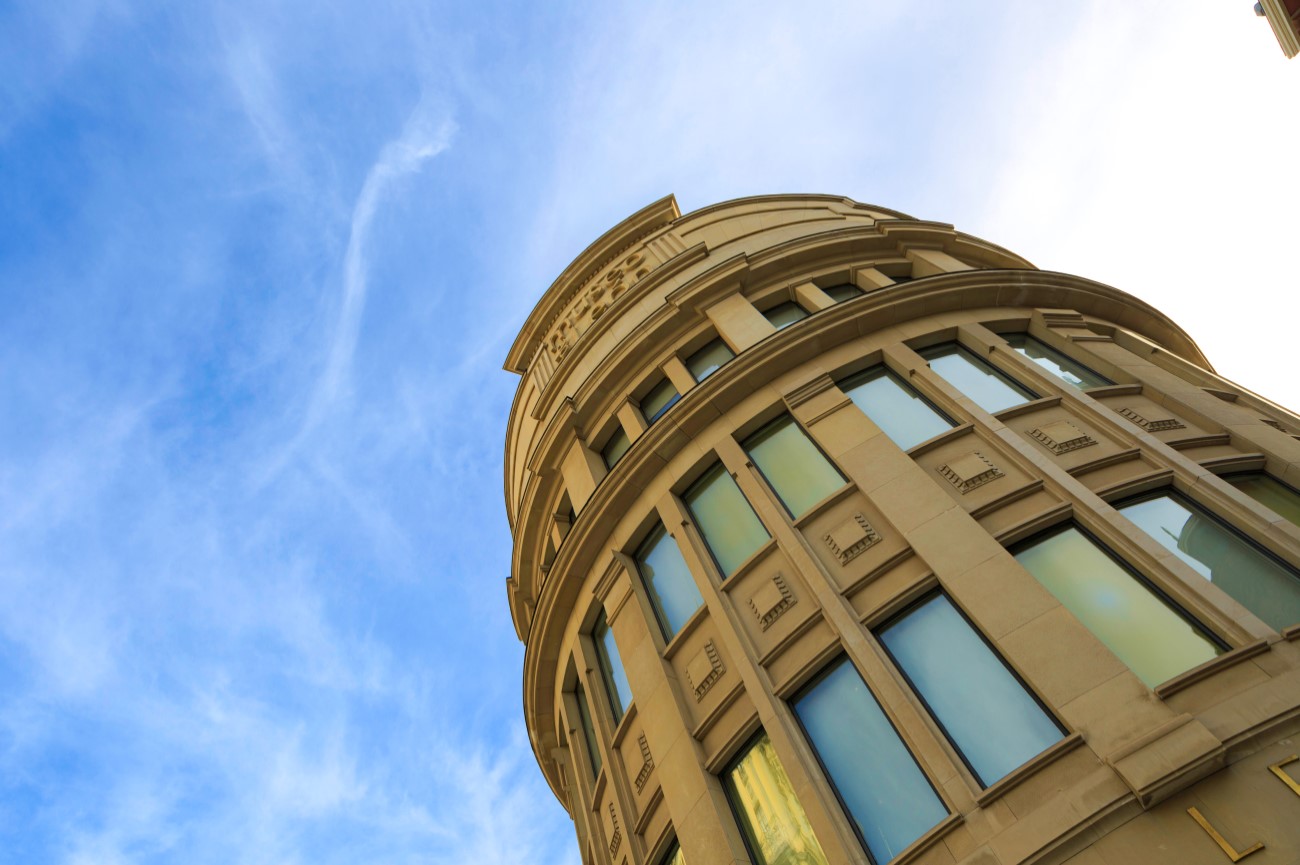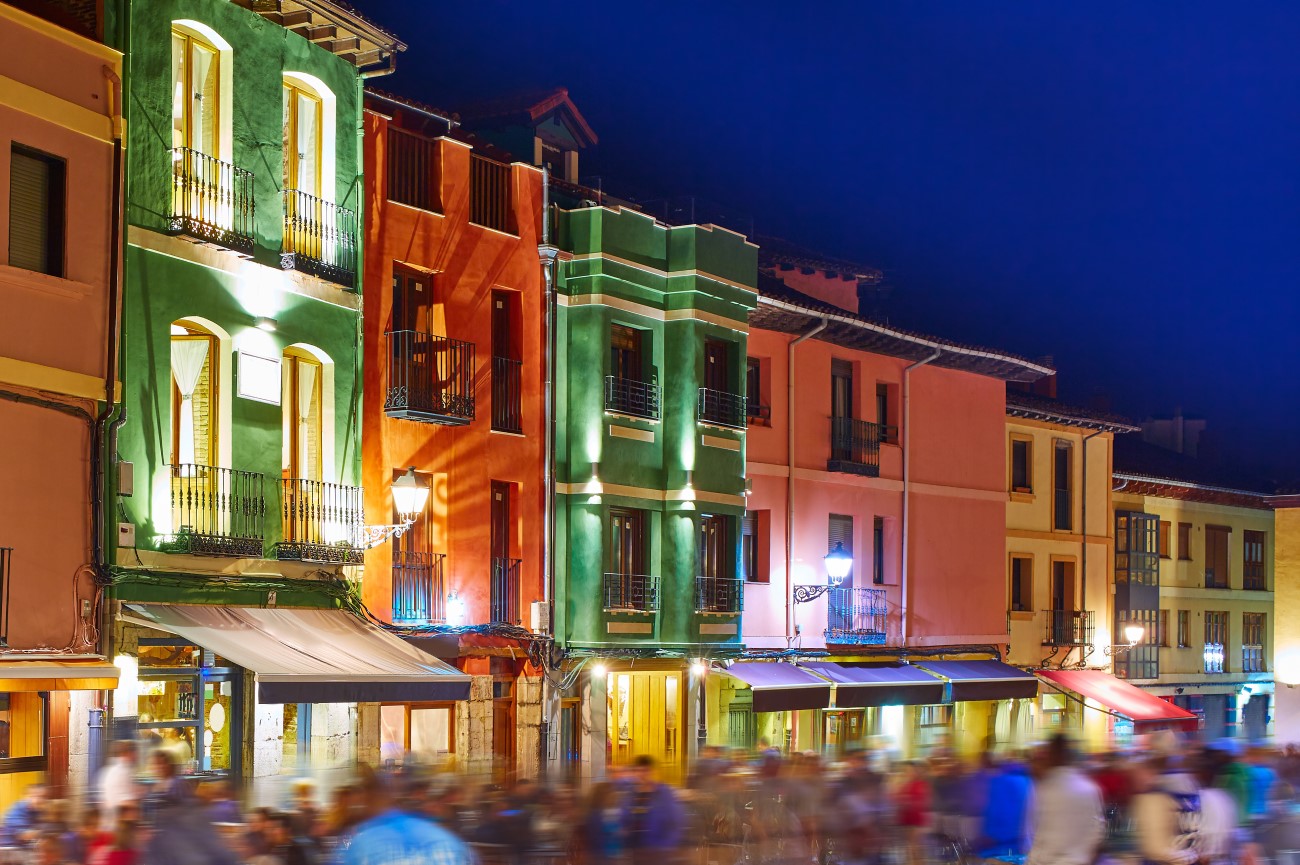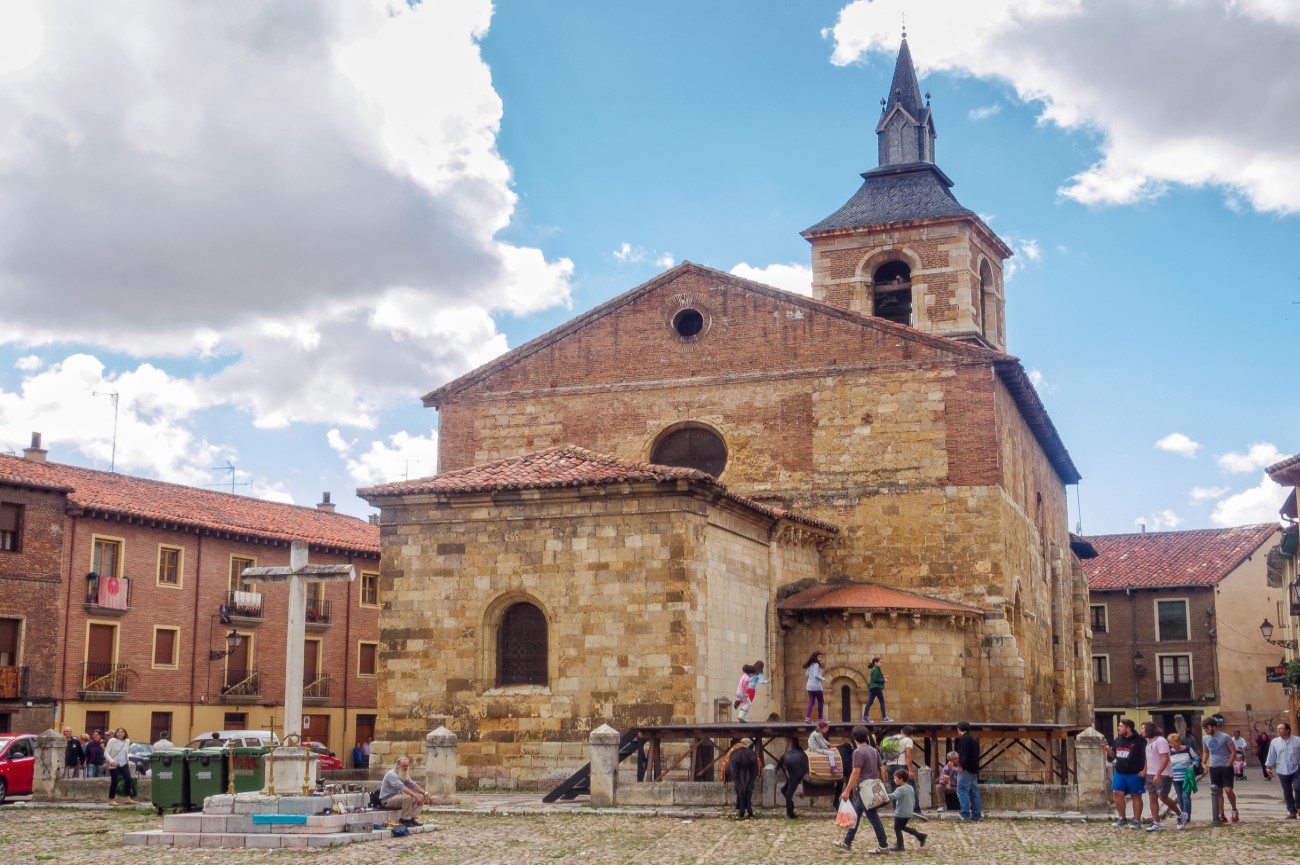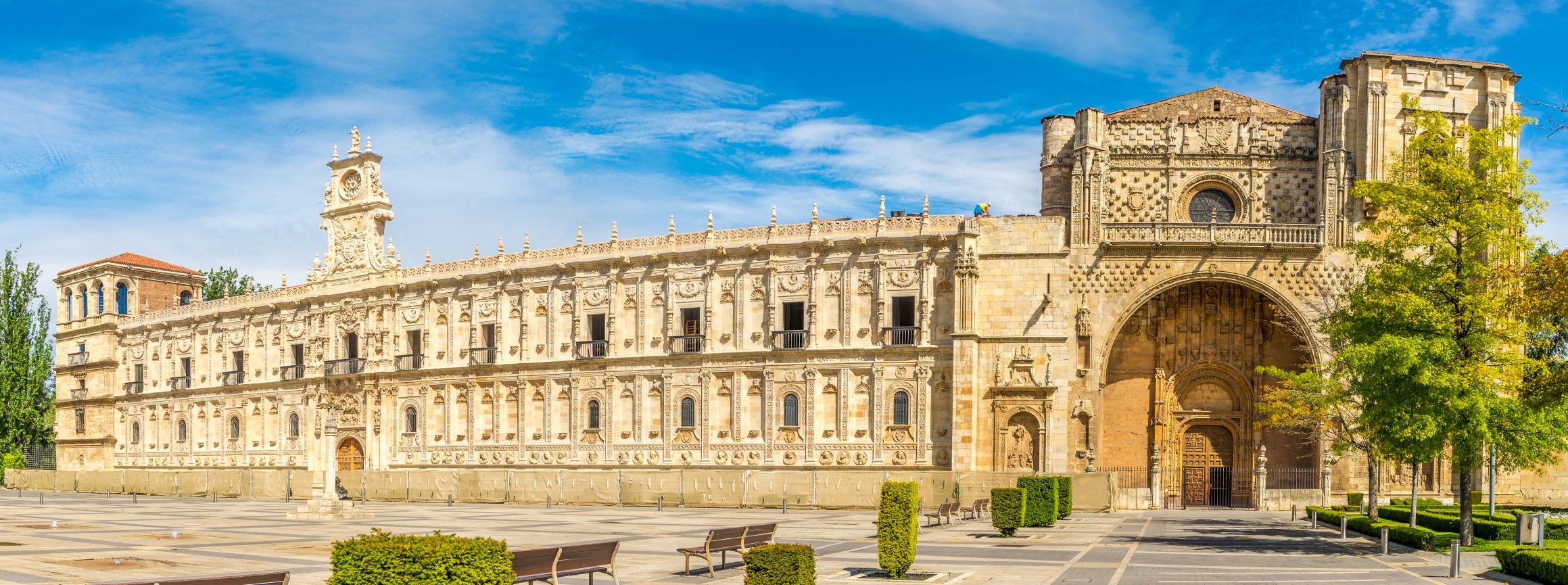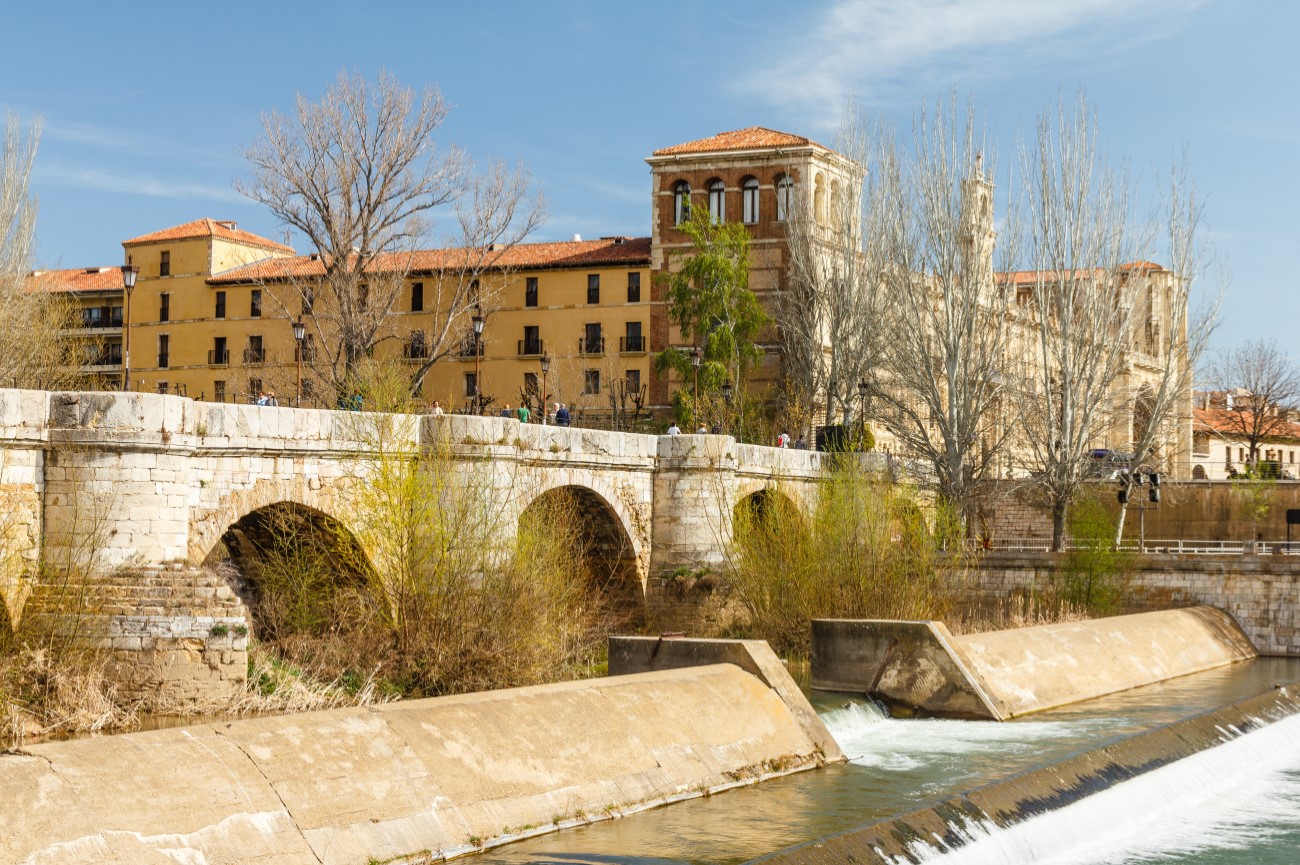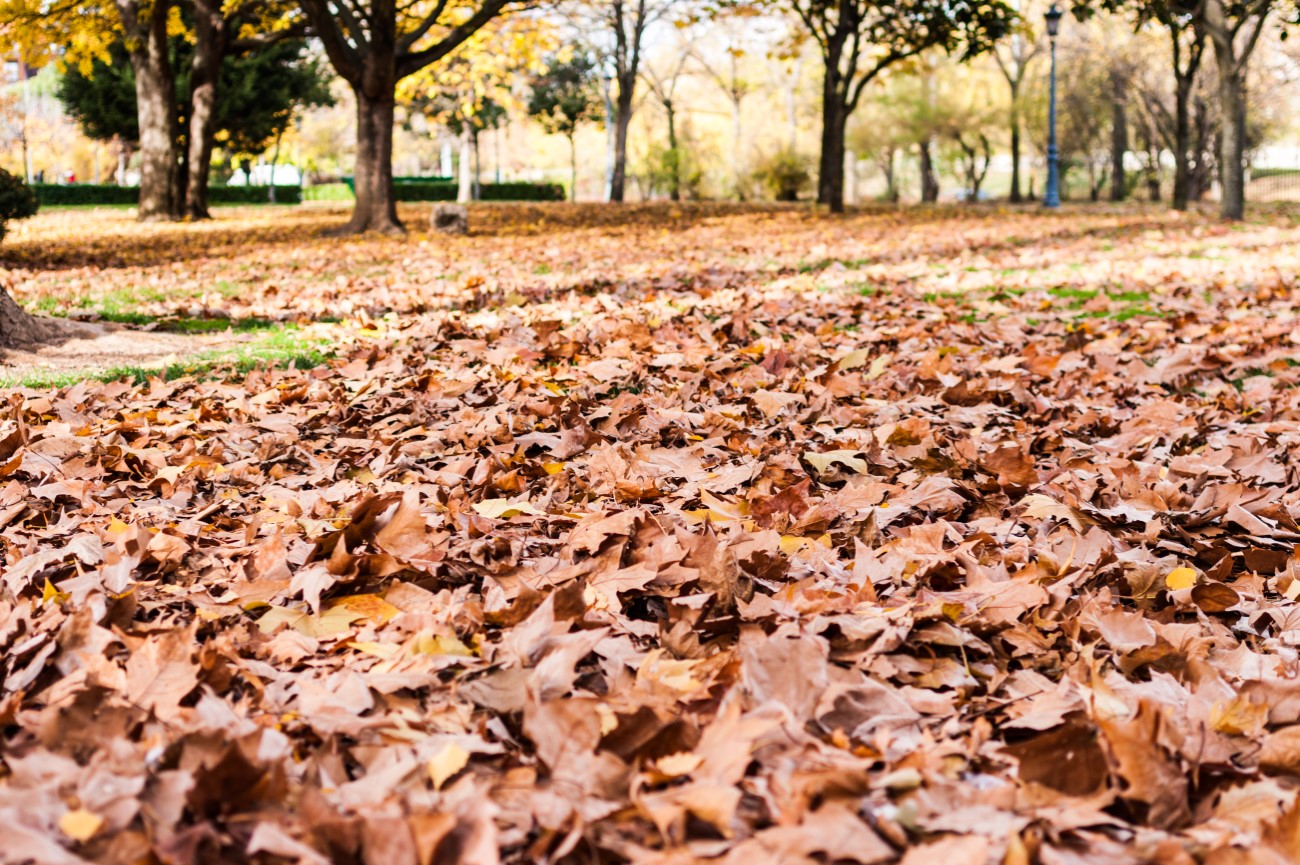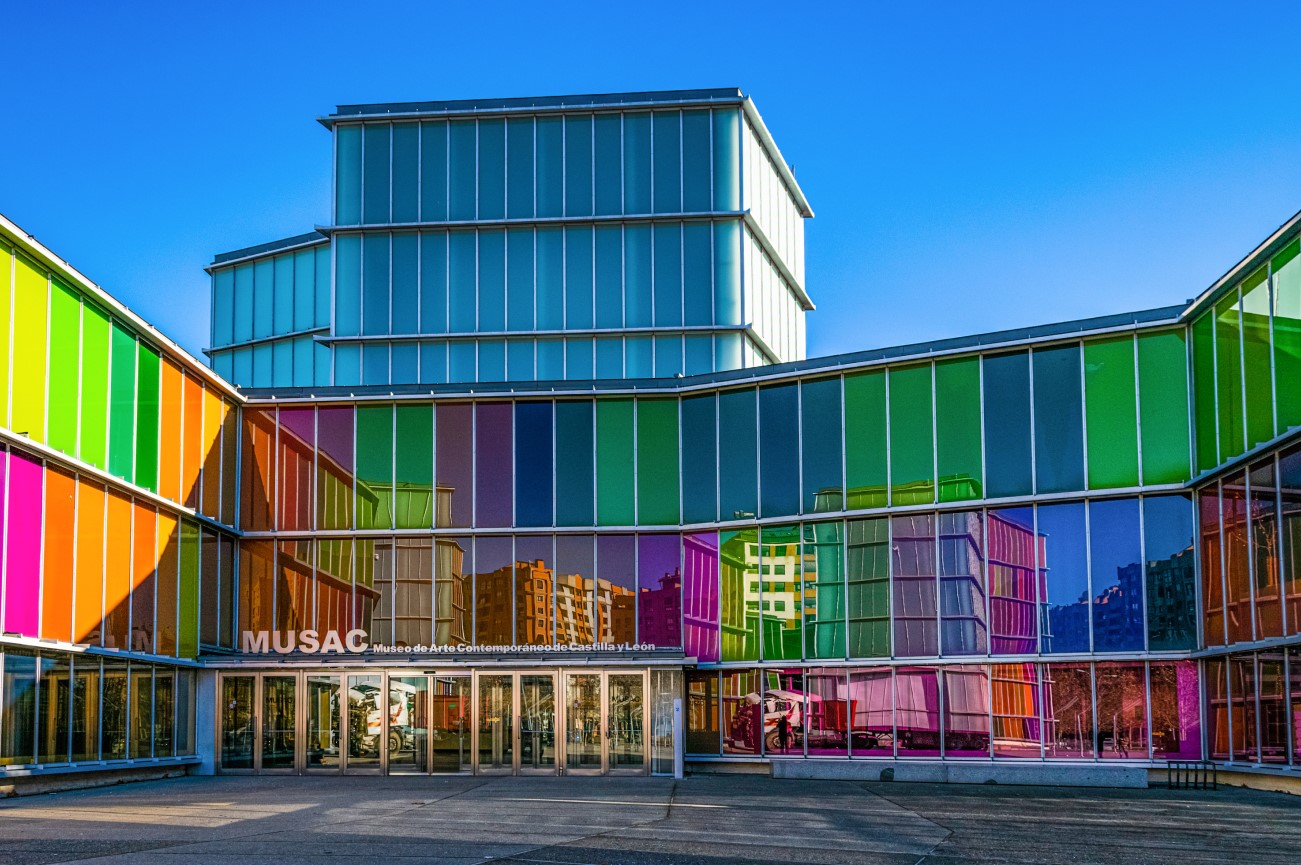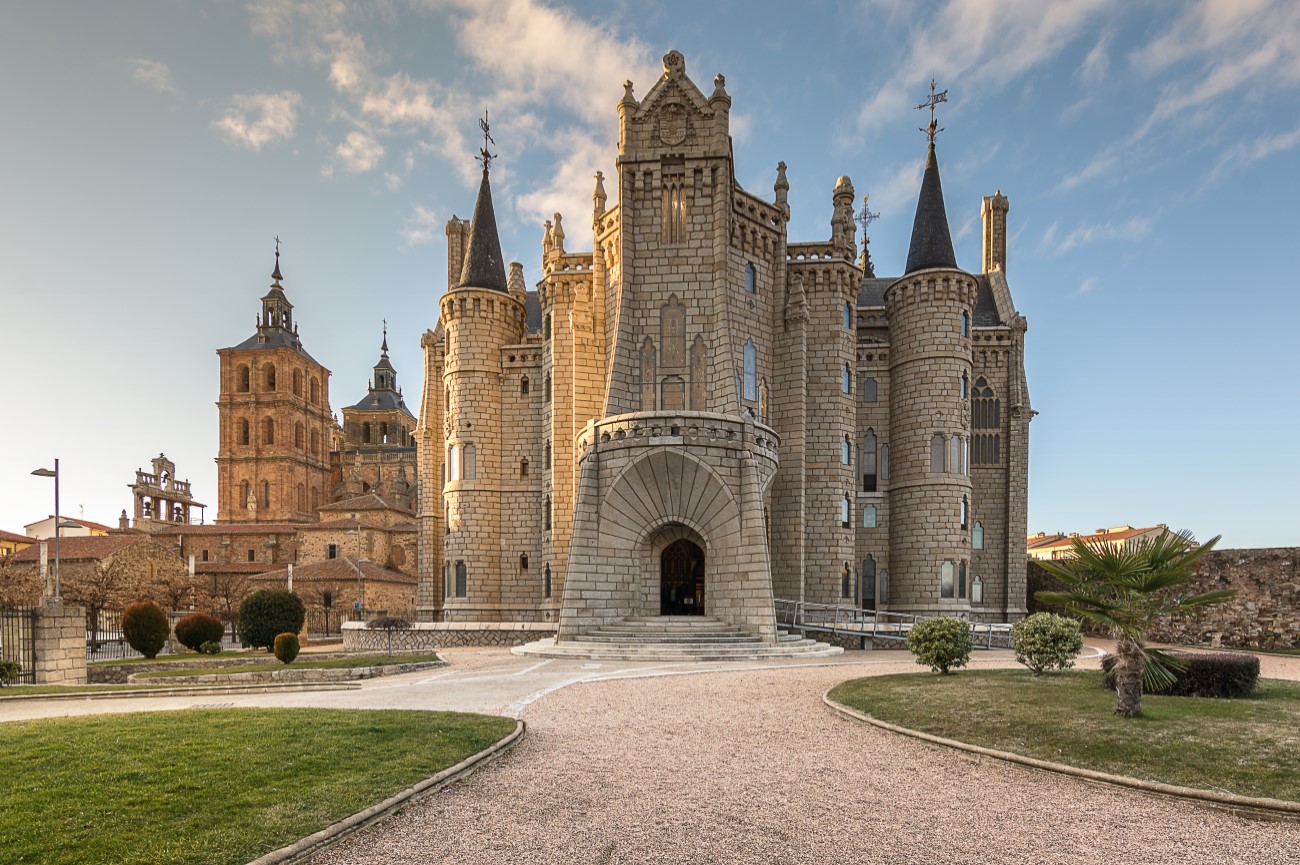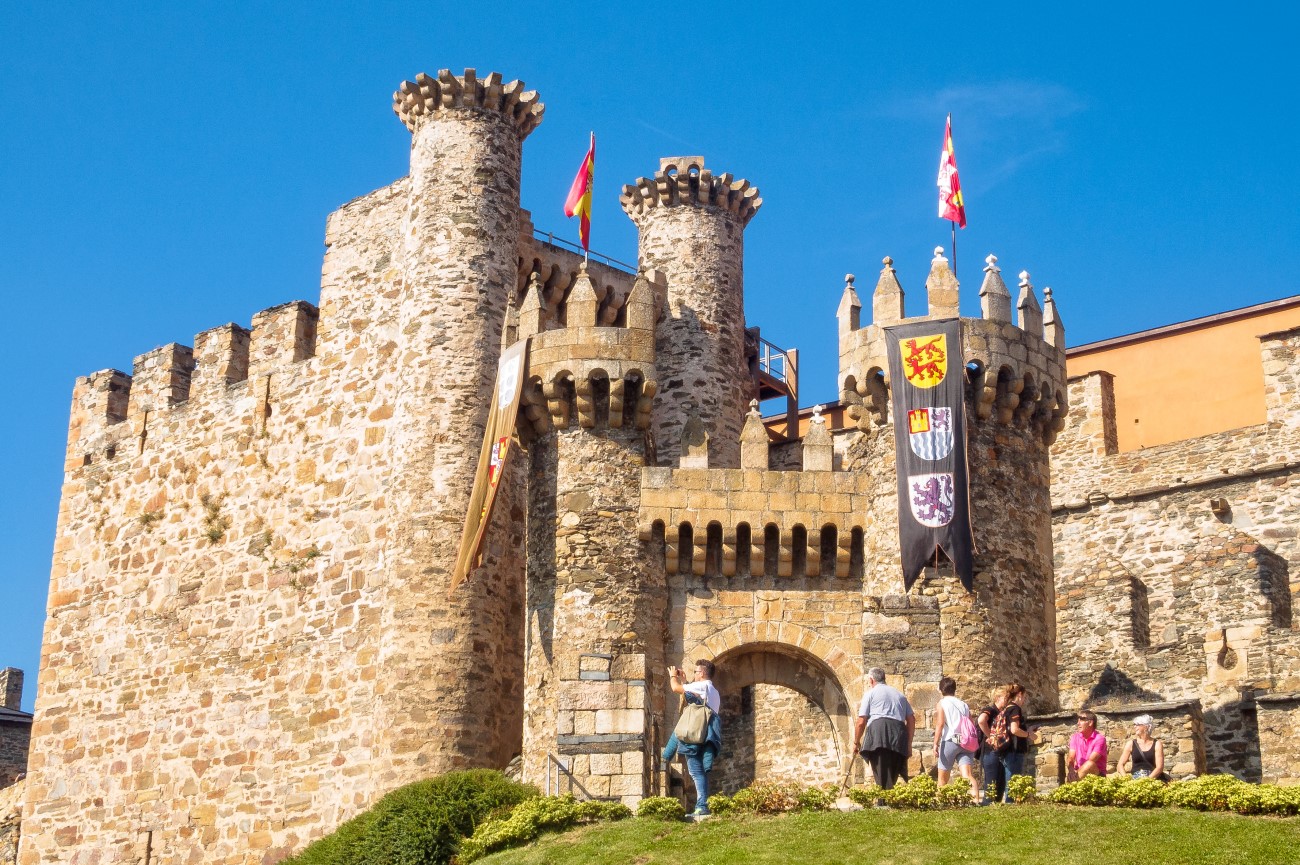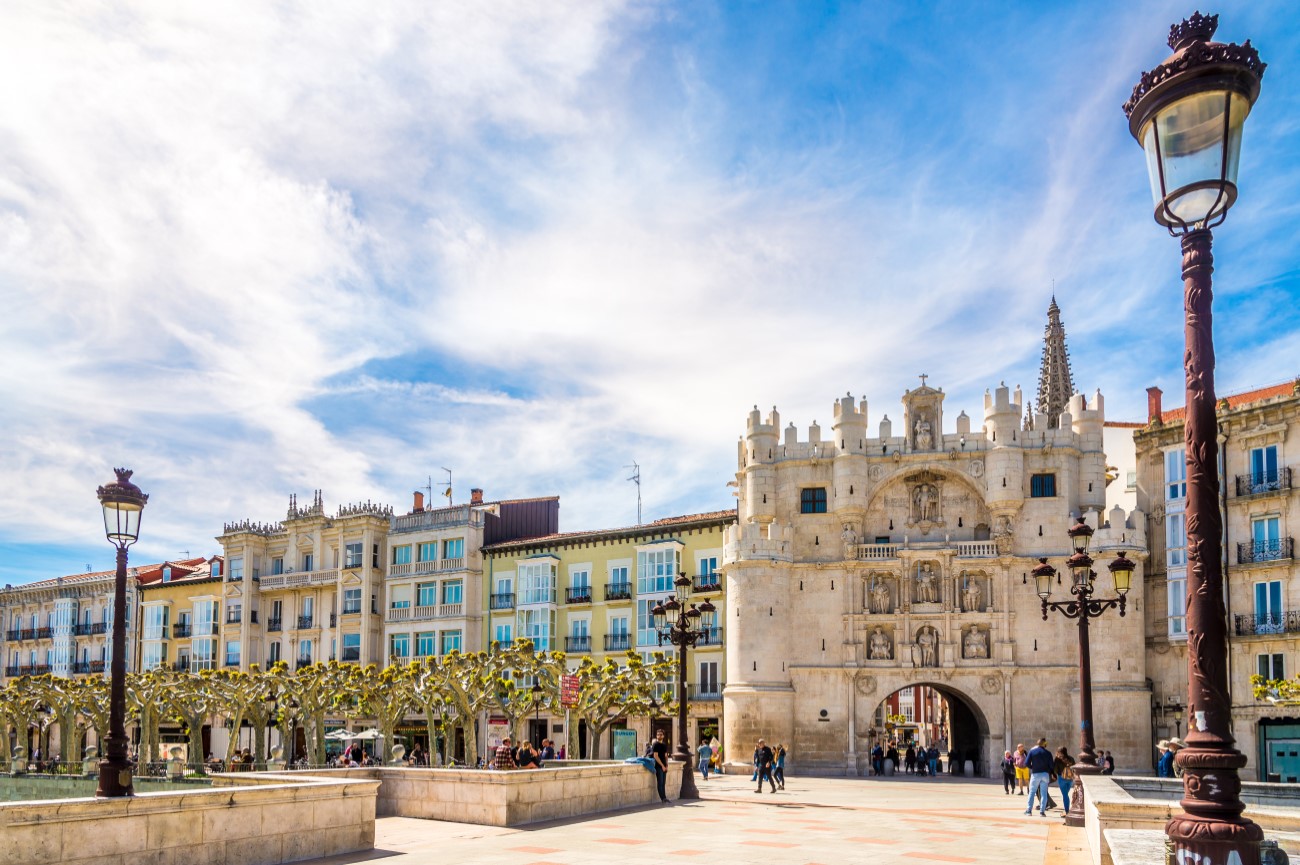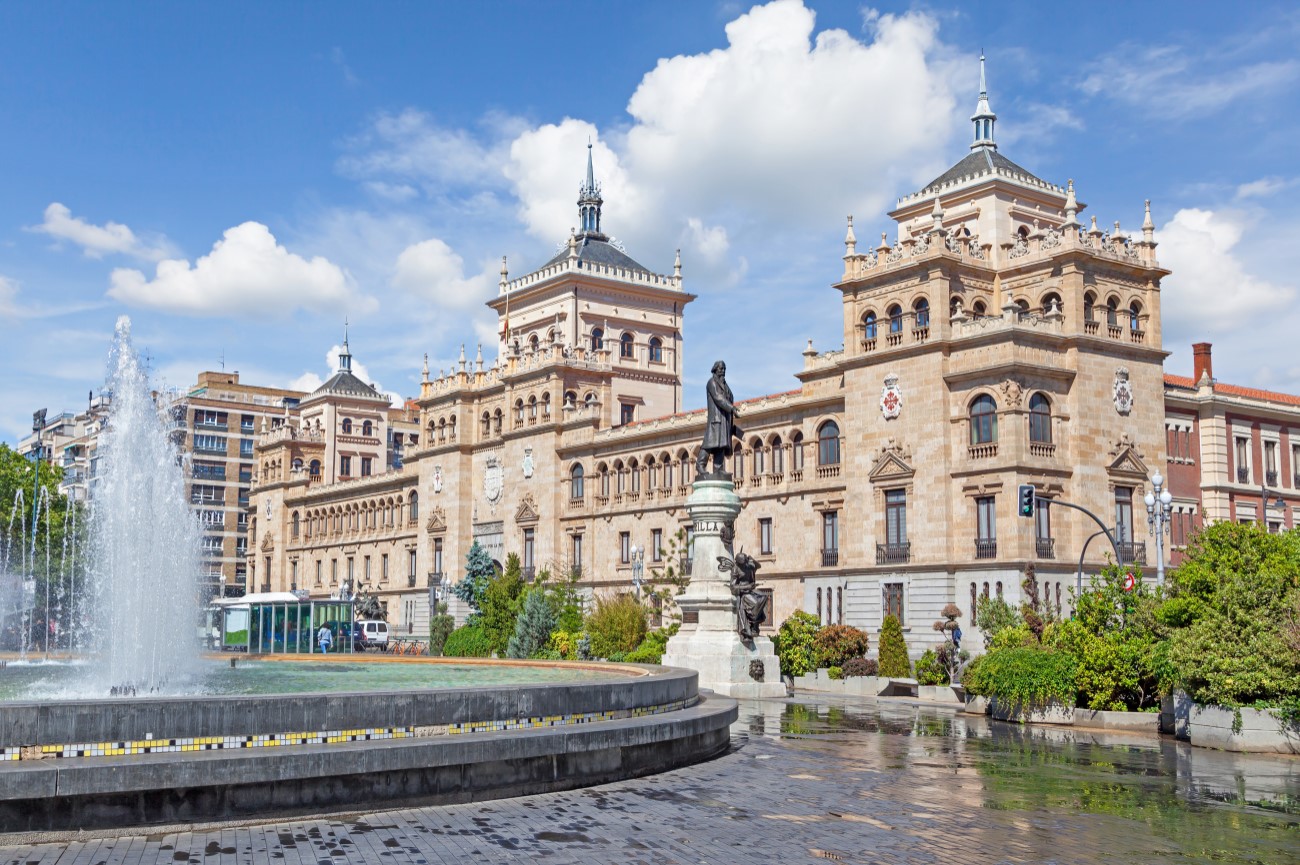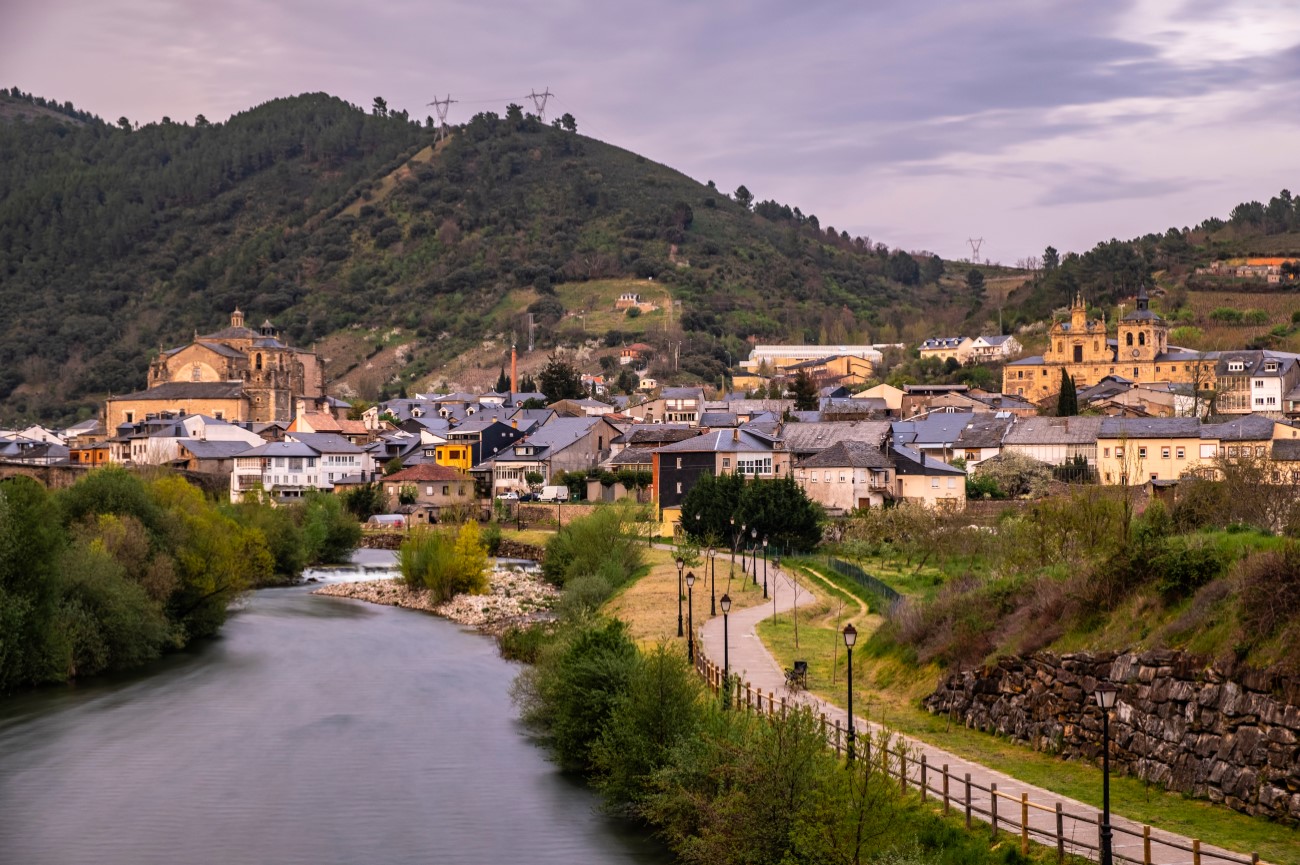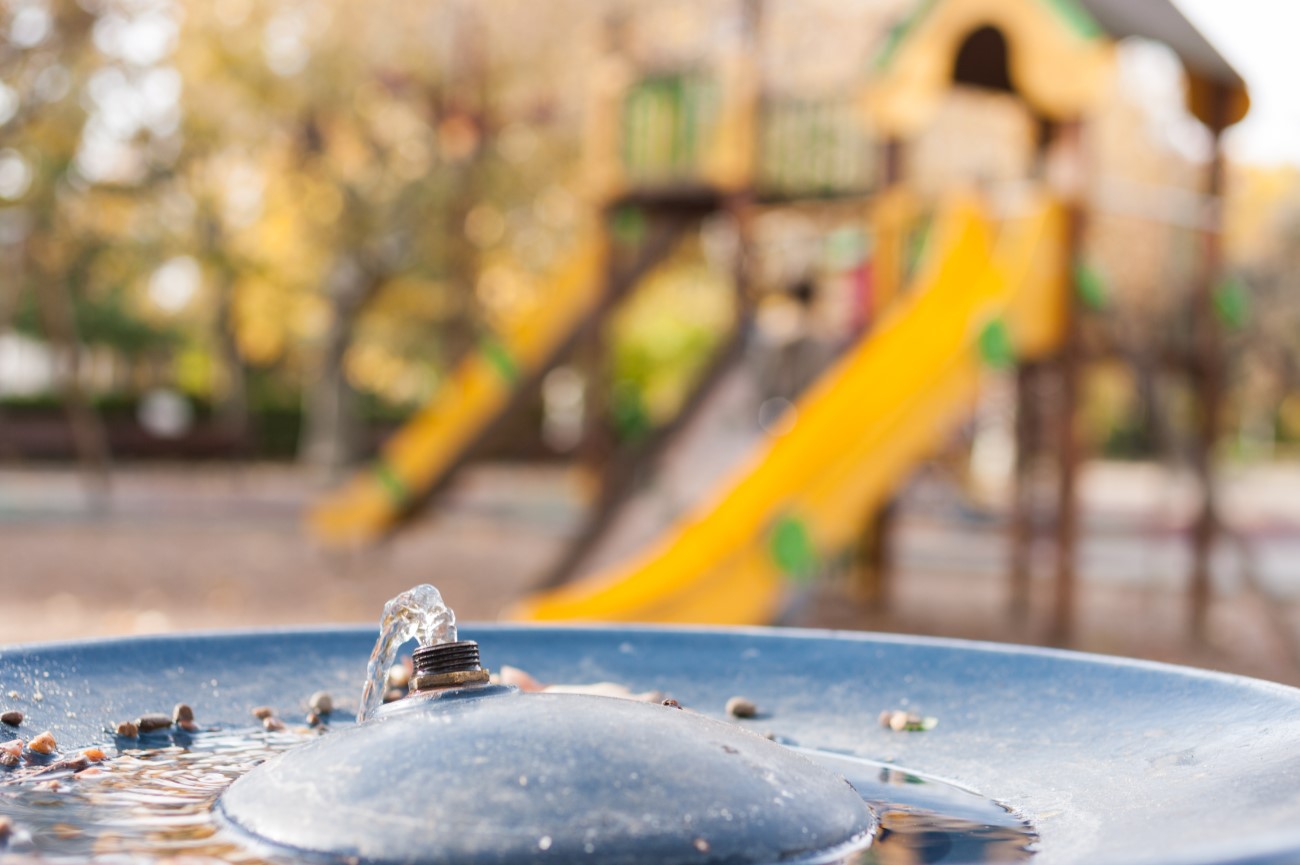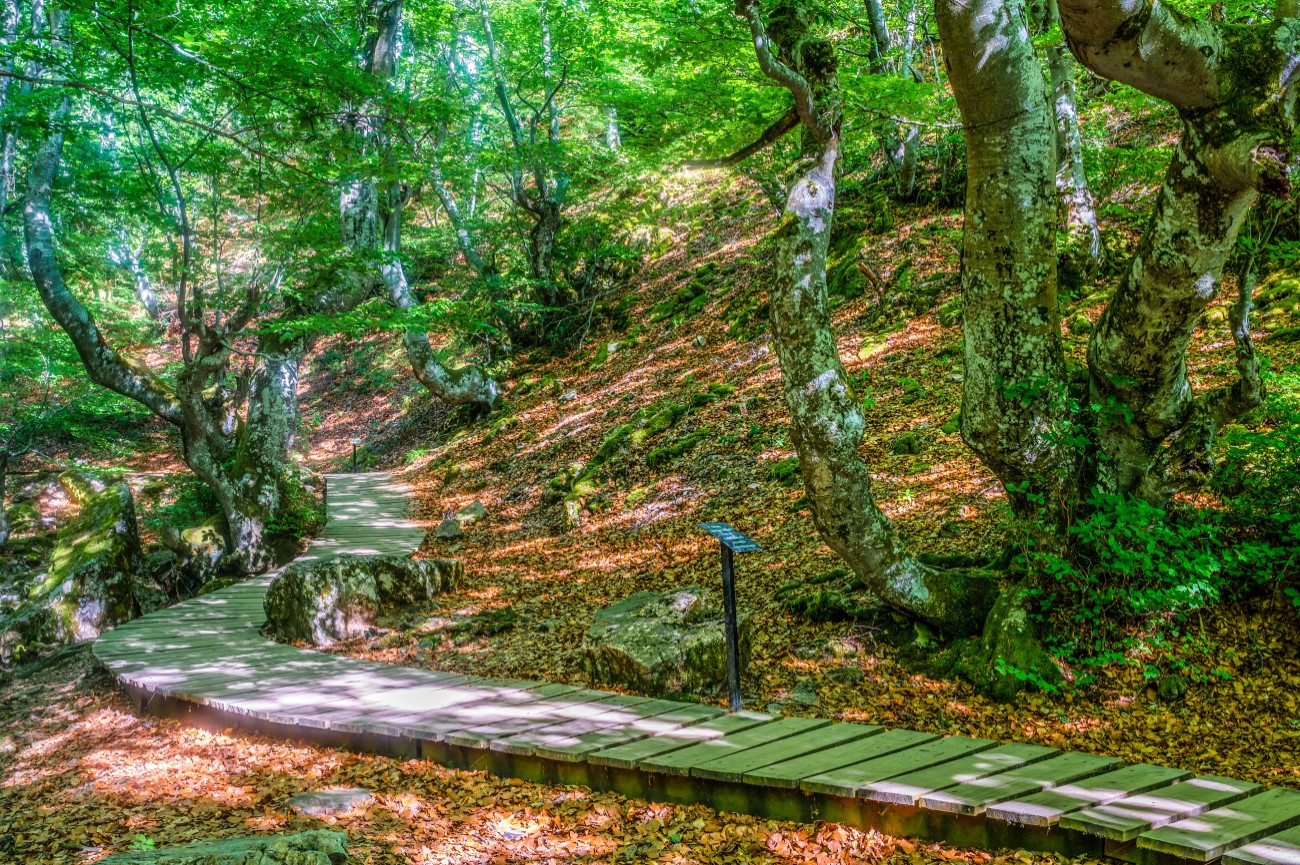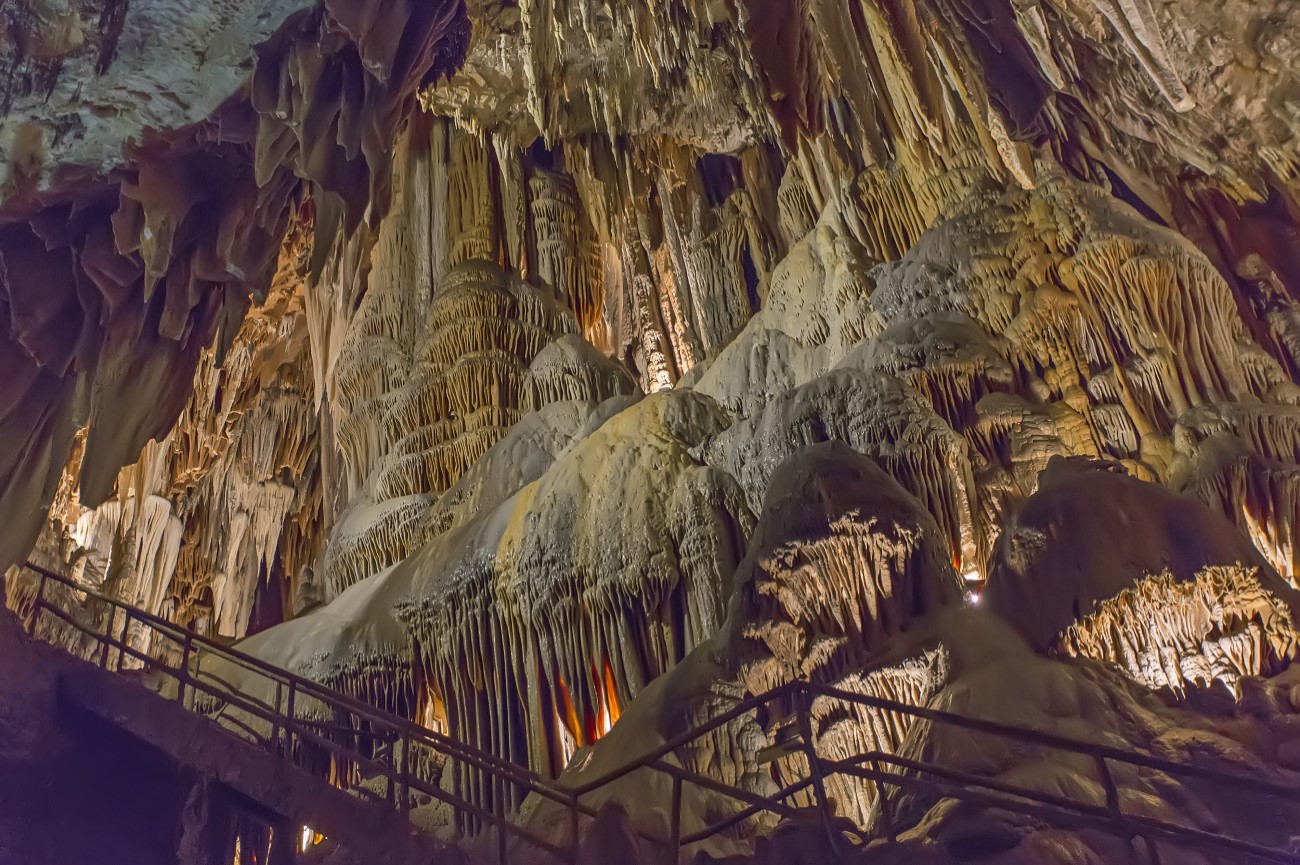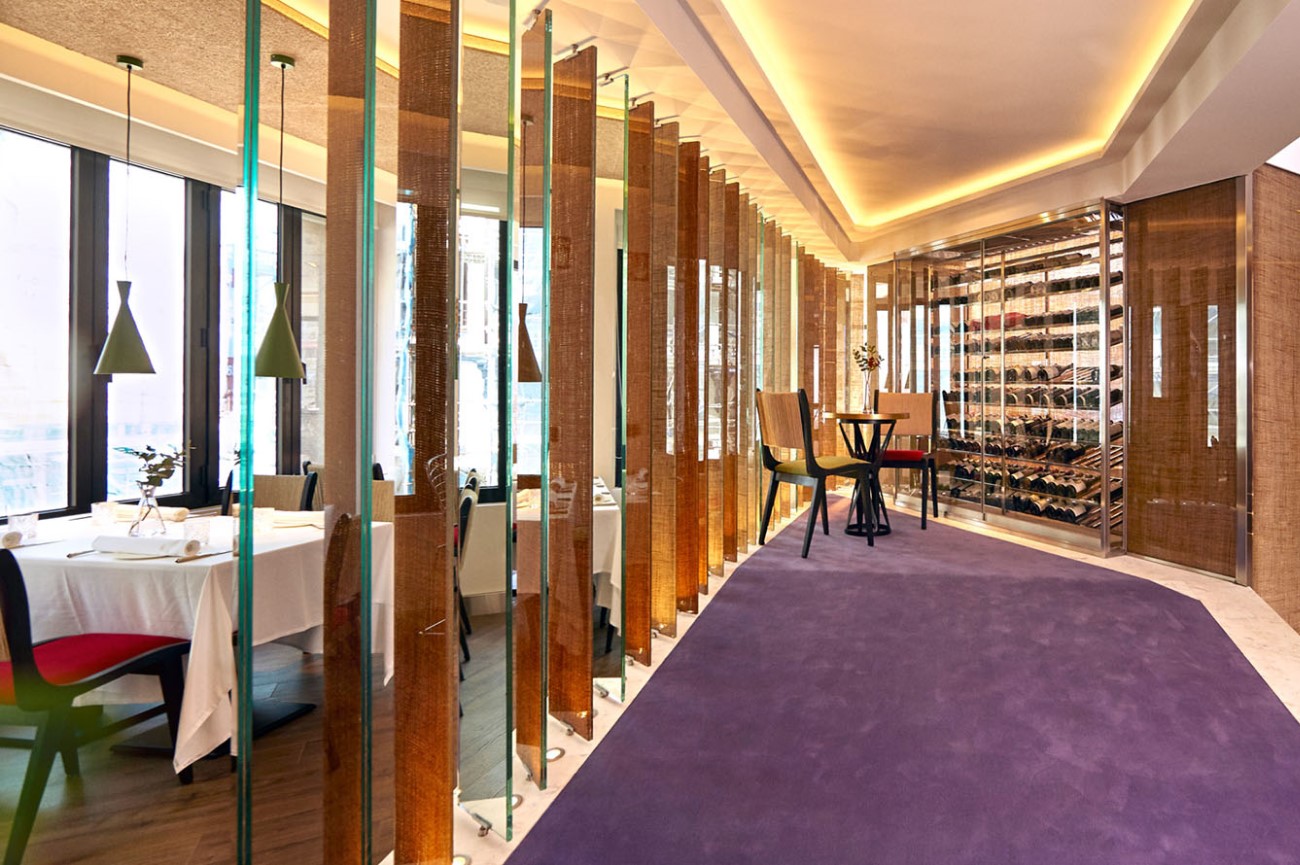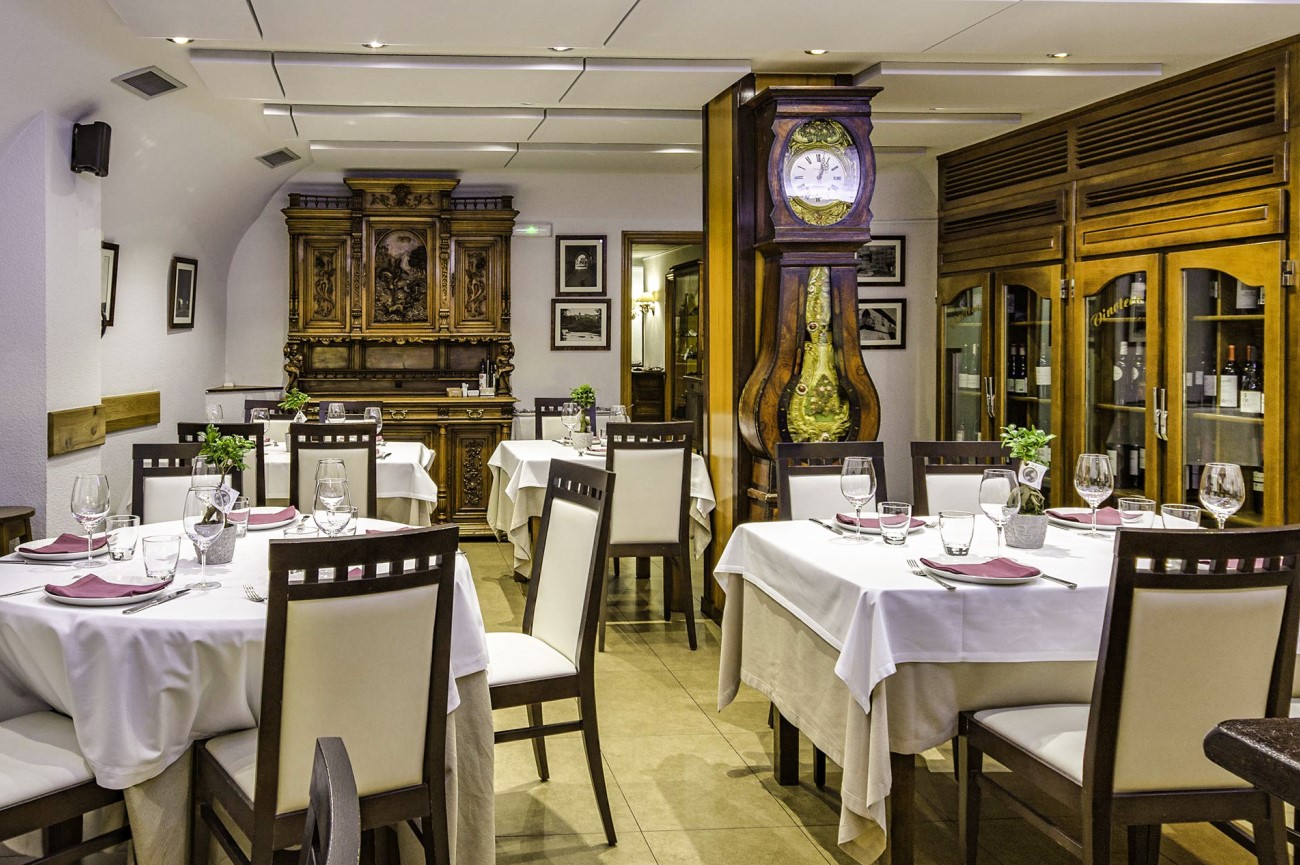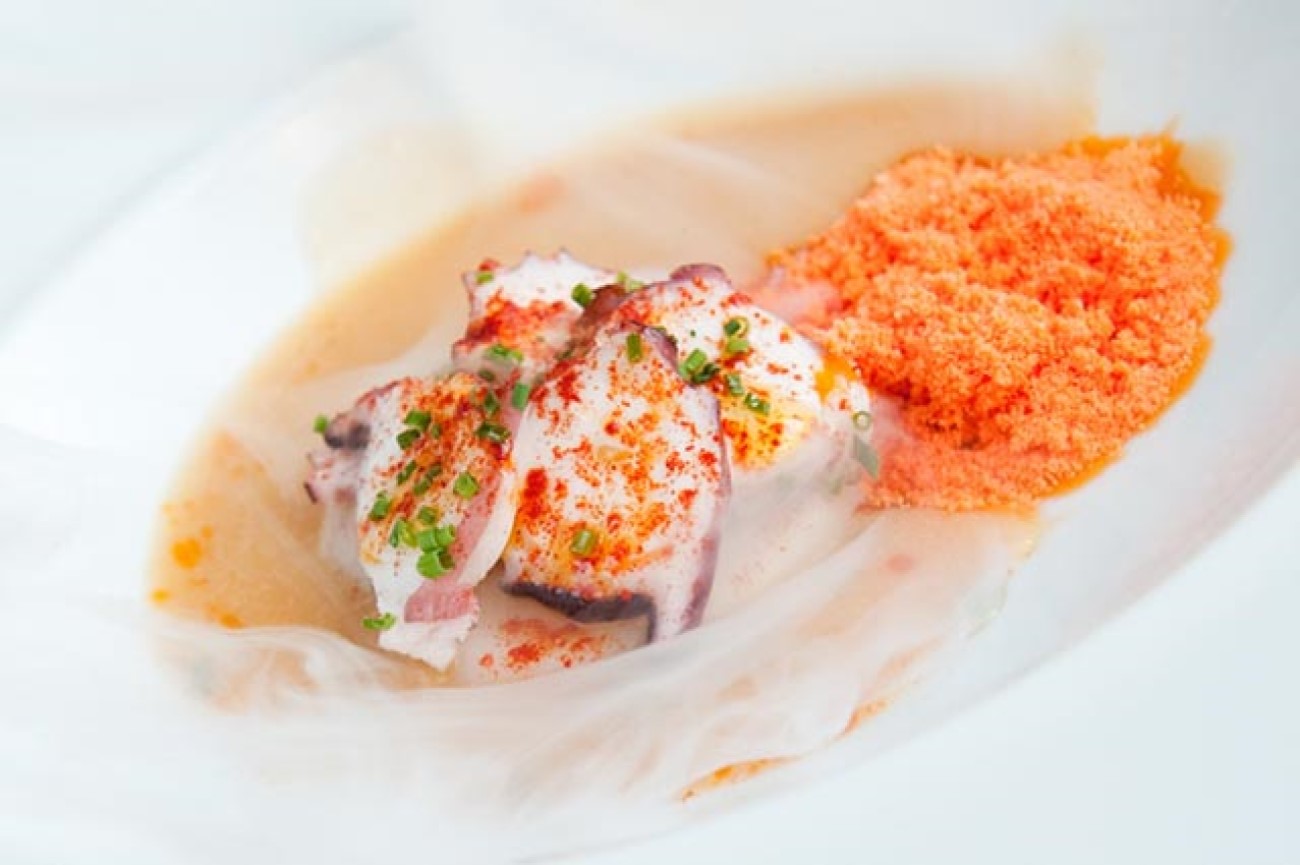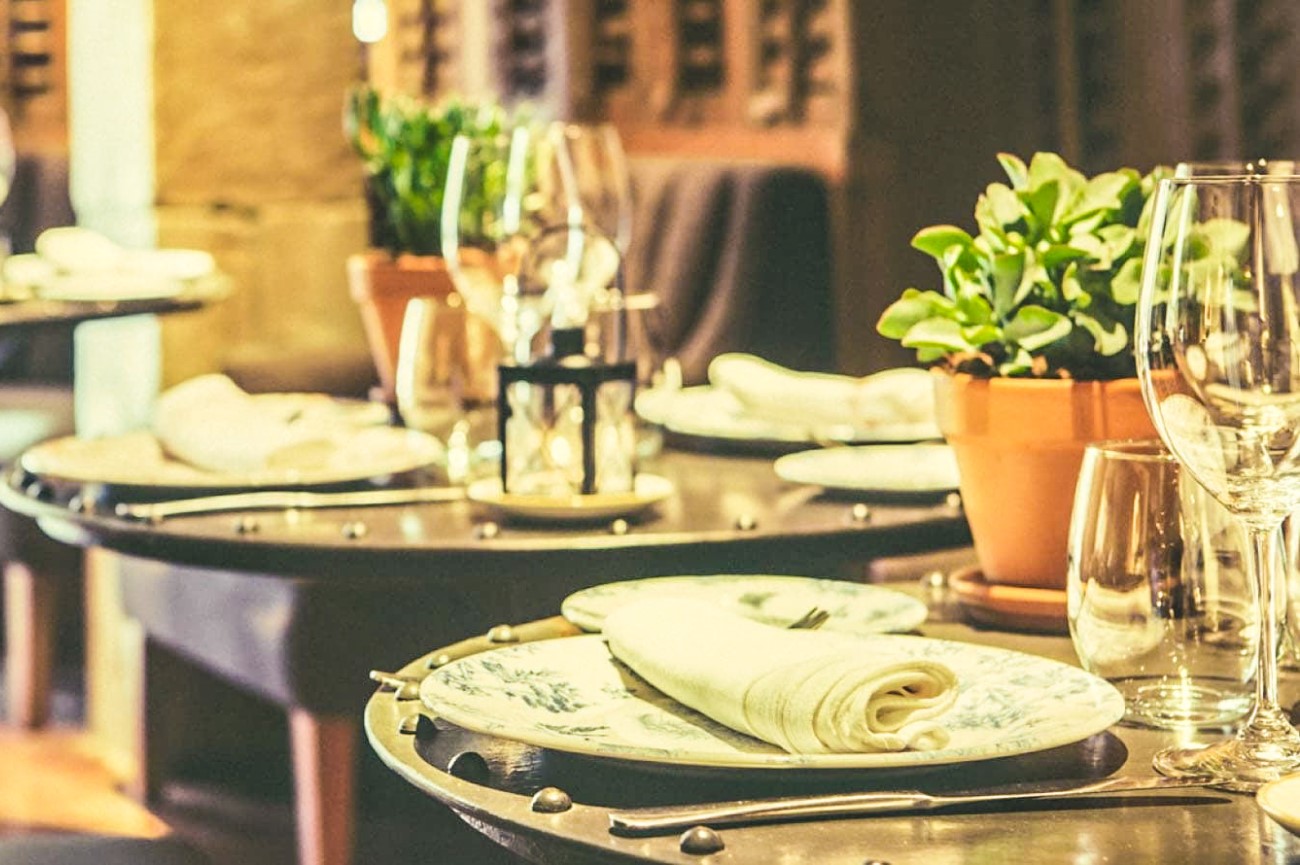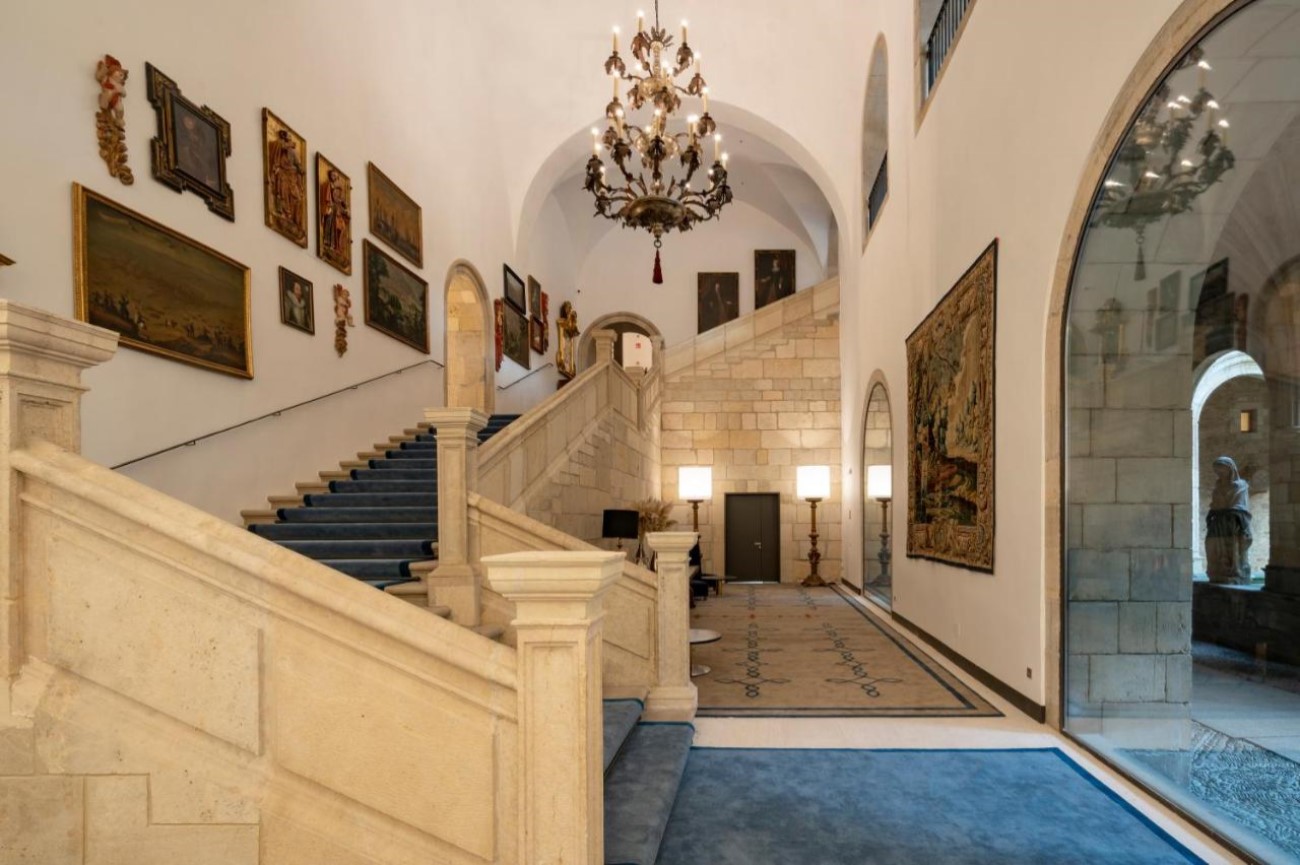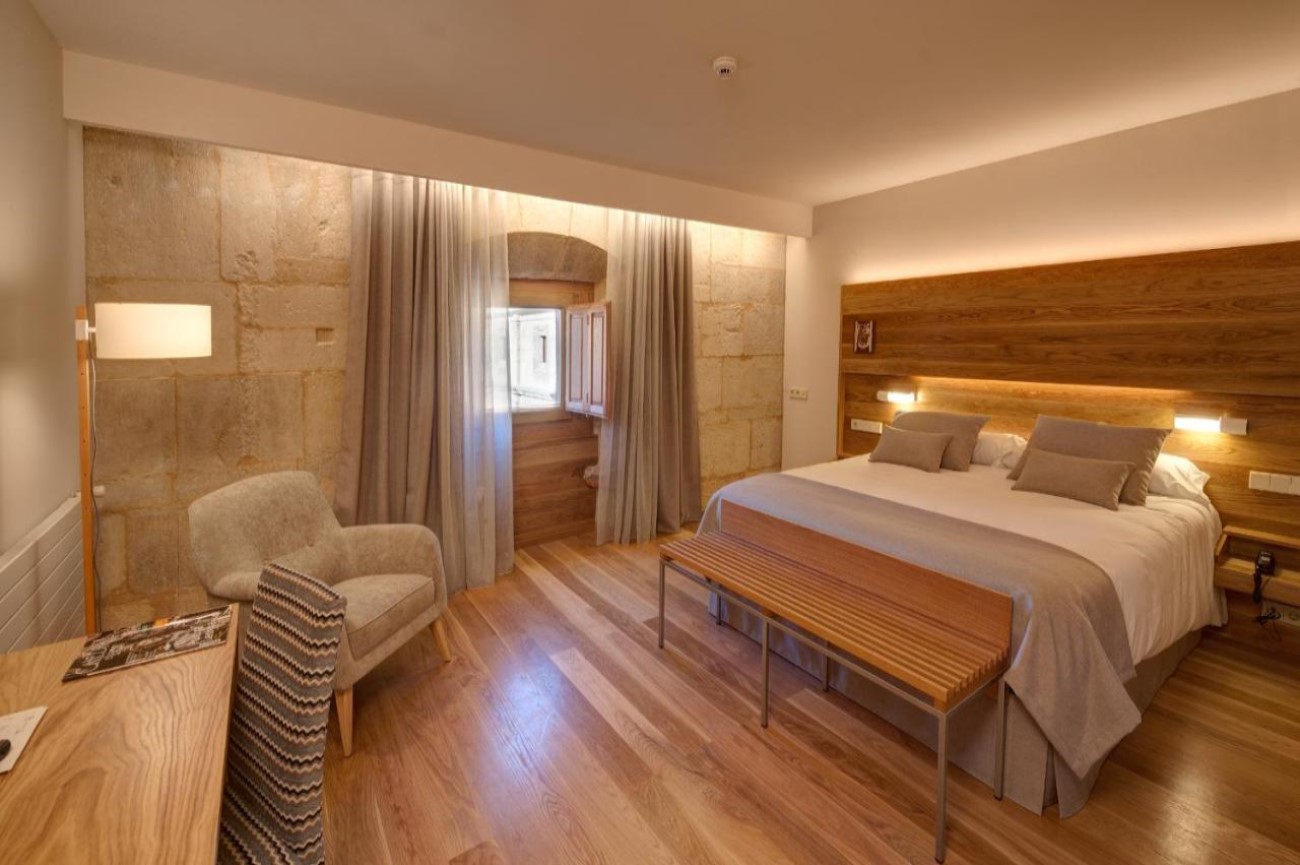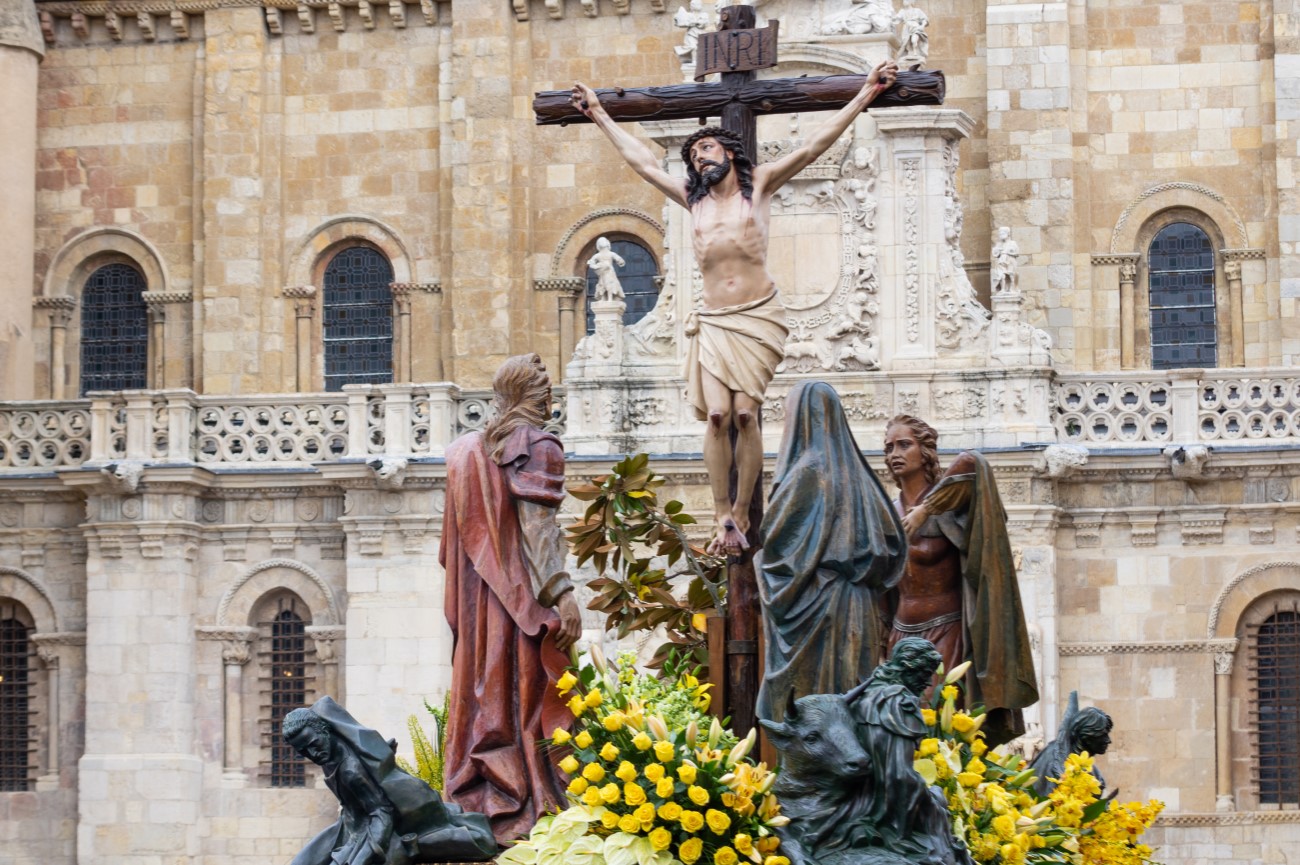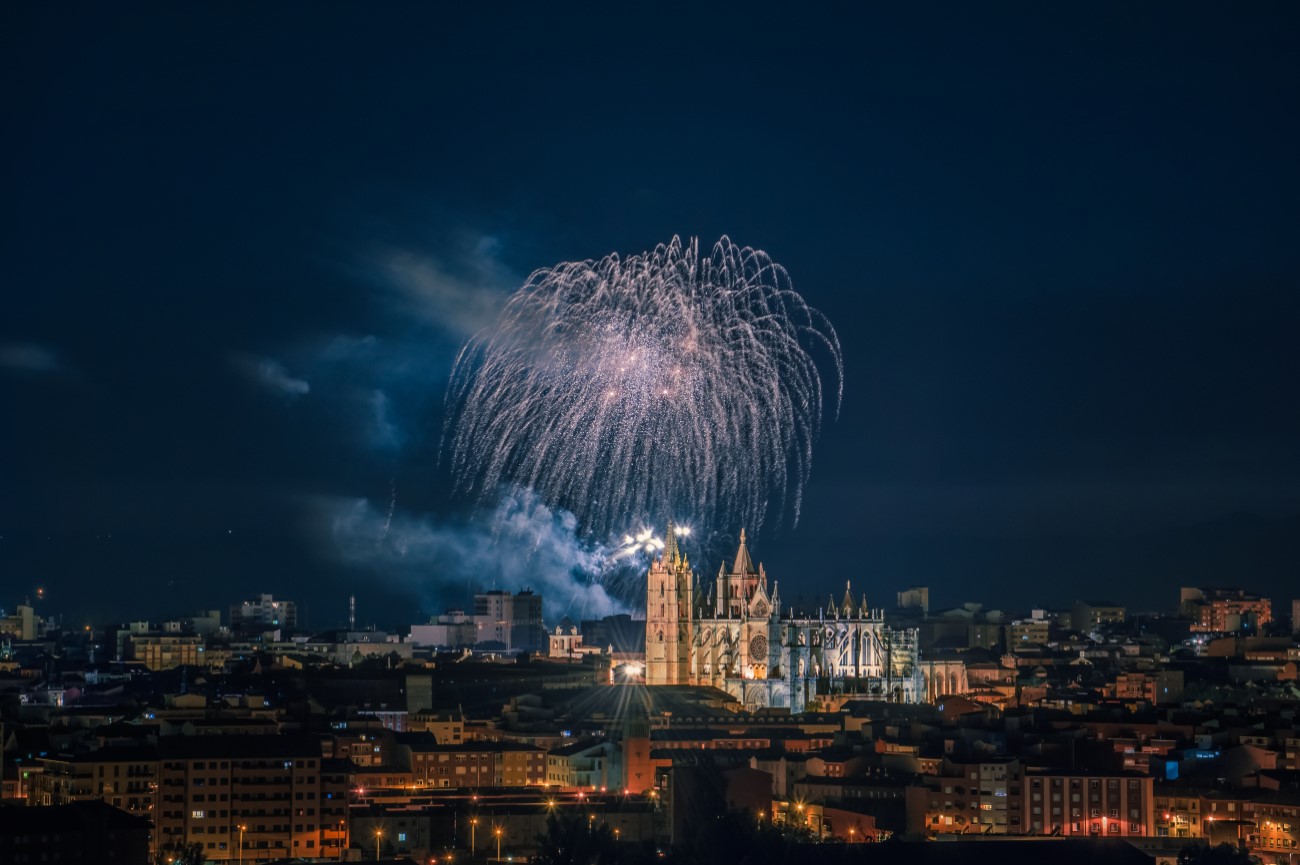Things to do in León, Spain
Part of the Castile-León region is the namesake city of León. The most prominent attraction here is the Gothic cathedral, but there are many more historical buildings to discover, including the Basílica de San Isidoro or the striking Casa Botines designed by Gaudí.
At night, the city comes alive with locals flocking to the tapas bars around the historic neighbourhood of Barrio Húmedo. León is also part of the Camino de Santiago, welcoming hundreds of pilgrims every year. Even on the outskirts, there is a rich cultural heritage to explore with places like Ponferrada and Astorga, within easy reach.
Our itinerary below includes the best things to do in León, including restaurants and hotel recommendations, as well as day trip ideas.
Day 1

Morning: Barrio Húmedo (Plaza Mayor and Calle Ancha)
Start your tour of León in the old town. Also known as Barrio Húmedo, it’s where you’ll find most of the city’s main attractions, The first stop is Plaza Mayor. This picturesque square was once known as Plaza Pan (Bread Square) since there were a lot of bakeries here. Today its colonnade arches are home to many cafés and shops. Surrounding the square are a series of 17th-century buildings, including the town hall on the west end. If you come on Wednesdays or Saturdays you might catch the local produce market. Continue exploring the old town, following narrow streets like Calle Ancha, which leads on to the Cathedral.
Museo Sierra-Pambley
Still within the old town, you’ll find the Museo Sierra-Pambley. This small museum occupies a 19th-century house that belonged to the Segundo Sierra-Pambley, a Spanish philanthropist who founded one of the first schools in the region. Inaugurated in 2006, it allows visitors to see how the Leonese bourgeois elite used to live. The house still features its original furnishings, including luxurious carpets and patterned wallpapers. If you have time, you can also visit the nearby Fundación Vela Zanetti, a small art gallery dedicated to the painter José Vela Zanetti.
León Cathedral and Museum
Next stop is the Cathedral, the most important landmark in León. Built in a French Gothic style, its spires are visible from pretty much every corner of the city. It’s worth going inside to marvel at the colourful stained glass windows decorating the walls. Most of the building dates back to the 13th century, but some parts were added later on. You can also visit the adjoining religious museum or take a walk down to Avenida los Cubos to see a section of the old city walls.
Basílica de San Isidoro
Much older than the cathedral is the Basílica de San Isidoro. This striking Romanesque building was founded in 1063 by Fernando I and Doña Sancha. It includes a Royal Pantheon, an Oriental and Biblical Museum and a collegiate library. Visitors can enjoy the colourful frescoes inside or dine below the ancient cloisters, since part of the collegiate was converted into a luxury hotel.
Morning - León Tour Map
Afternoon: Palacio De Los Guzmanes
Head down to the Palacio de los Guzmanes and admire its Renaissance façade designed by architect Rodrigo Gil de Hontañón. Established in the 16th-century the palace was originally built as a home for the Guzman family. Today it is the headquarters of the government of León. There are usually guided tours of the patio between 11:30 am to 4:40 pm.
Casa Botines/Museo Gaudí
Barcelona isn’t the only city where Antoni Gaudí left his mark. The Spanish architect also designed several buildings in the North of Spain. Among these is the Casa Botines in León. Established between 1891 and 1892, this Modernist building was commissioned by Simón Fernández and Mariano Andrés González, representatives of the Hispano-Colonial Bank of Barcelona. Inside there’s a museum, with exhibits dedicated to Gaudí and paintings by other famous artists like Salvador Dalí and Goya.
Museo de León
To learn more about the city’s history, pay a visit to the Museo de León, one of the oldest museums in the region. Divided into four floors, the collection stretches from the Iron Age to the Middle Ages and the 19th century. Among the highlights are artefacts discovered in Las Médulas, an ancient Roman mining site located near León. Make sure to climb up to the rooftop for a panoramic view of the city and the cathedral.
Iglesia de San Marcelo
Just a few steps from the museum is the Iglesia de San Marcelo. The original building dates back to the 9th century, but it was destroyed and rebuilt in 1096, making it one of the oldest churches in León. However, the church was modified through the years and most of its current look is actually from the 17th century. Highlights include the gilded altarpiece with the image of Saint Marcelo.
Tapas in Barrio Húmedo
For dinner, head back to the old town. The name Bairro Húmedo stands for “wet district” since this area has the biggest concentration of bars in León. Pick a spot, order a round of tapas and then follow the locals lead, hopping from bar to bar to sample different dishes.
Day 1, Afternoon - León Tour Map
Day 2

Morning: Iglesia de Nuestra Señora del Mercado
If you’re spending another day in León, there are a few more attractions you can cover. Start the morning with a tour around the Iglesia de Nuestra Señora del Mercado. This Romanesque church overlooks the Plaza del Grano, a charming cobblestone square in the city centre. Opening hours vary, but it’s still worth passing by to admire the church’s stunning exterior.
Convento de San Marcos
Next, make your way to the Convento de San Marcos. Established around 1541, this imposing building stands out with its plateresque exterior made up of slender columns and intricate medallions. It features a church, an archaeological museum and a convent which is now home to a five-star hotel. Commissioned by Ferdinand the Catholic King, it’s one of the most beautiful examples of Renaissance architecture in the country. Visitors can access the chapter house and the cloister, but to appreciate the convent’s full glory it’s worth spending the night here.
Afternoon: Parque De Quevedo
From the convent, cross the Puente de San Marcos and you’ll end up at the Parque de Quevedo. Set along the Bernesga river, it’s one of the largest parks in León, stretching for over 40,000m2. Take a stroll through the tree-lined walkways and keep an eye out for the peacocks.
Museo de Arte Contemporáneo de Castilla y León
Back on the other margin is the Museo de Arte Contemporáneo. It’s among the most important contemporary art museums in the region of Castilla y León. Inside, you’ll find over 1,500 art pieces from Spanish and specifically Leonese artists, alongside international names. Open since 2005, the museum’s collection covers the 20th and 21st century. The building itself is also quite striking, with its rainbow-coloured glass exterior designed by Luis Mansilla and Emilio Tuñón. These are meant to be inspired by the colours of the cathedral’s stained glass windows.
Day 2 - León Tour Map
Day Trips From León
- Astorga: This hilltop village is only a few miles west of León. It has a picturesque setting, amid the plains of Castilla and the Mountains of Galicia. Despite its small size, Astorga has quite a few attractions, including a striking Gothic cathedral, Roman ruins and a palace designed by Gaudí.
- Ponferrada: Ponferrada is another place worth visiting. Highlights include the Templar castle and a 16th-century basilica. The town is also a stop on the Camino de Santiago and a great base to explore the Roman mines of Las Médulas.
- Burgos: About two hours east of León, you’ll find Burgos. This city is famous for its impressive Gothic cathedral, which dominates the skyline. Other attractions include a medieval castle and the Museum of Human Evolution.
- Valladolid: Head south from León, and visit the lively city of Valladolid. Home to a series of medieval landmarks, it’s the capital of the Castilla-León region. Famous monuments include the Gothic San Pablo Church and a Royal Palace that welcomed Spanish kings in the early 17th century.
Top Things to Do With Kids in León
León is home to many family-friendly attractions. If you’re visiting in the summer, you can head to Islaleón, a water park with a large swimming pool and fun slides. Another option is to visit Villafranca del Bierzo, a small village near León famous for its river beach.
Closer to the city centre, there are also many parks where kids can run around including the Parque Del Cid or Parque De Quevedo.
If you’re staying a bit longer, you can explore other attractions nearby such as the enchanting forest of El Faedo or the mysterious Caves of Llamazares and Valporquero.
Where to Eat in León
The region of Castilla y León is renowned for its grilled and roast meats. Specialities include cecina (smoked beef) and the botillo, a meat-stuffed pork dish from El Bierzo, a district that also produces wine. Among the local sweets is the Mantecadas de Astorga, a kind of muffin that tastes similar to a pound cake. If you’re looking for places to eat in León, below is a list of the city’s top restaurants:
- Restaurante LAV: This modern restaurant is located a few steps away from the Museo de León. You can order à la carte or get the tasting menu which includes six different courses. The dishes change with the season, but the local cheeses are a constant feature.
- Restaurante Alfonso Valderas: Open since 1998, this cosy restaurant specialises in cod and red meat dishes cooked in a variety of ways. Highlights include the cod risotto and the lamb ribs.
- Restaurante Cocinandos: Close to the Iglesia de San Marcos, you’ll find Cocinandos. This Michelin-star restaurant offers two seasonal menus and a wine list featuring mostly local wines. Specialities include the cold tuna and tomato soup and the pastrami.
- Casa Mando: Casa Mando is located on the edge of the old town on Calle General Lafuente. It’s one of the best places to sample traditional Northern Spanish dishes. Try the solomillo (sirloin steak) or the cachopo (veal fillets with ham and cheese in breadcrumbs).
Where to Stay in León
- Parador de León (5 stars): This luxurious hotel occupies a 16th-century building once used as a military outpost. The vast property has an opulent decor with antique furnishings throughout. Some rooms even include four-poster beds and offer river views. There’s also a bar and a restaurant on site serving regional dishes.
- Hotel Real Colegiata San Isidoro (3 stars): In the heart of the old town, you’ll find this historic hotel attached to the Basílica of San Isidoro. The city’s main attractions are only a few minutes away, making it the perfect base to explore León. The rooms are spacious and modern, contrasting against the historical features in the hotel’s patio and corridors.
- Hotel Alda Vía León (3 stars): If you’re on the budget, this small boutique hotel is the perfect choice. Housed in an 18th-century building, the rooms have a rustic decor with exposed wooden beams and cast iron beds. It’s only five minutes away from the Cathedral.
Best Time to Visit León
The best time to visit León is between June and September. The weather will be pleasant enough to walk around with average temperatures ranging around 27º in August. Summer is also the perfect opportunity to catch local festivities like the Fiestas de San Juan y San Pedro. Another alternative is to visit around Easter for the Holy Week celebrations.
León Festivals
- Semana Santa: Like most Spanish cities, León celebrates Easter with a series of processions. These traditions date back to the 16th century and remain alive today. The event lasts for about 10 days and brings together the local hermandades (lay brotherhoods) who parade the streets with religious sculptures on their shoulders. Alongside the processions, there are also concerts and special sermons.
- Fiestas de San Juan y San Pedro: Around the last week of June, León comes alive with the San Juan and San Pedro celebrations. The festival includes concerts, food stalls and plenty of street performances.




